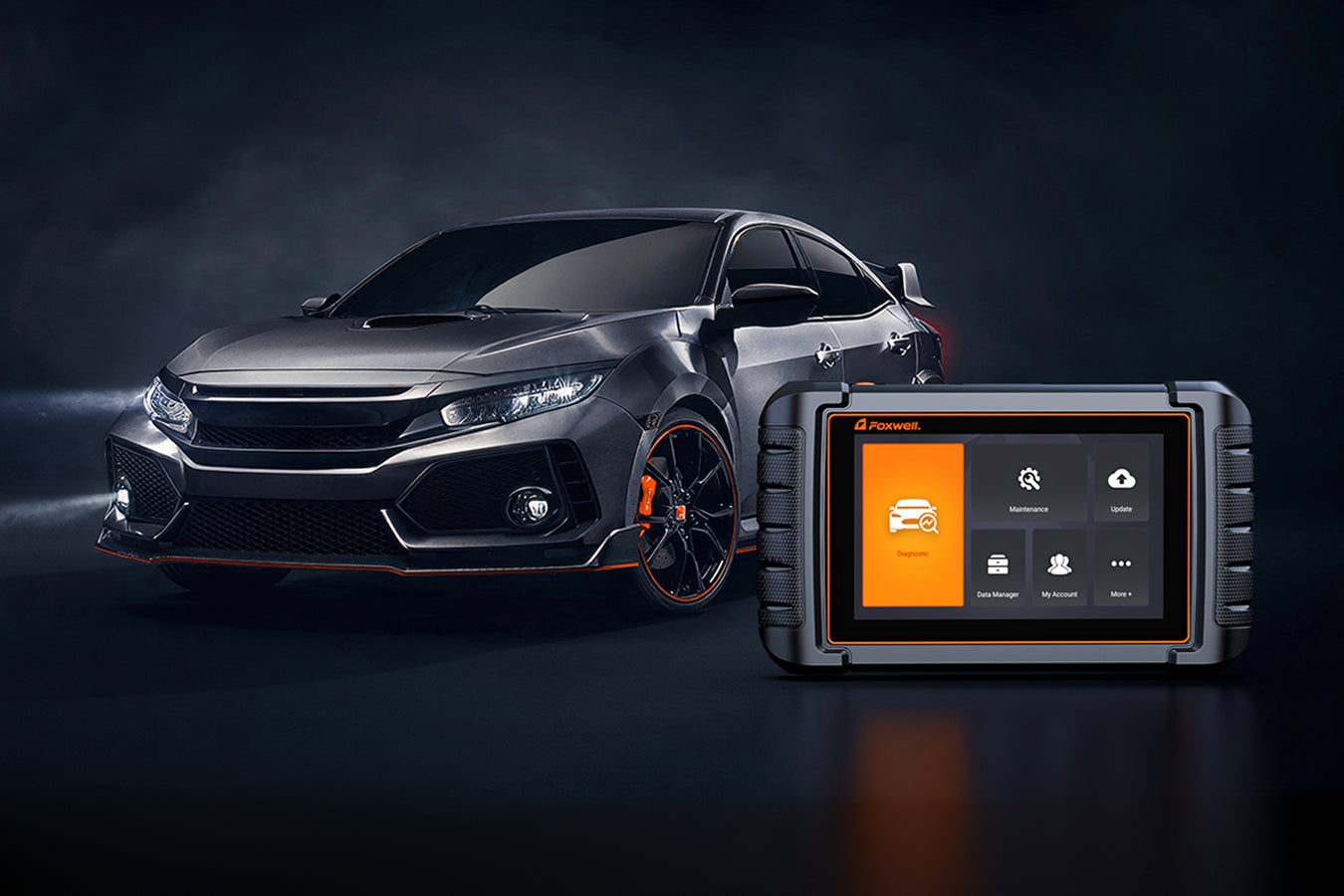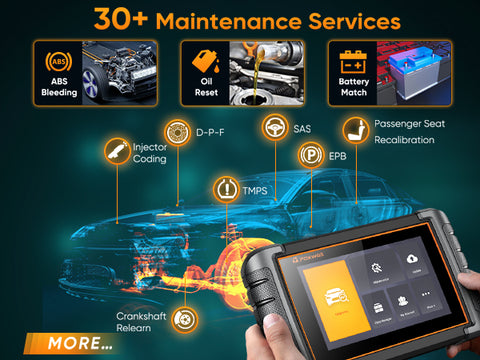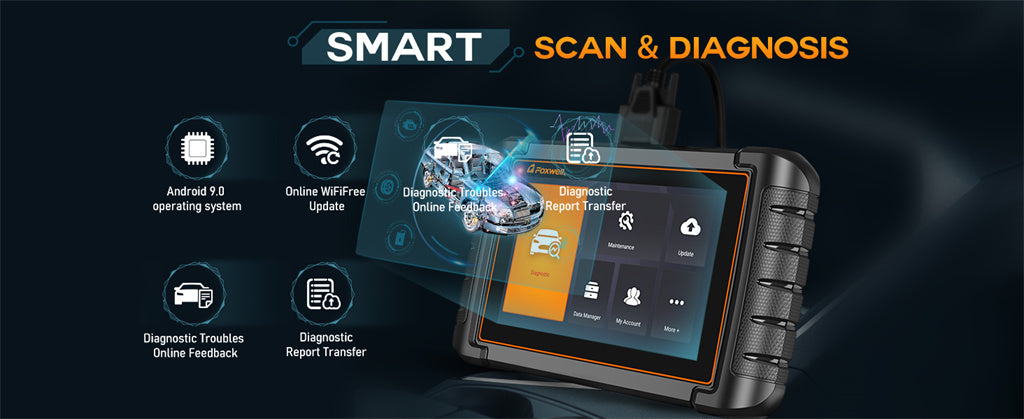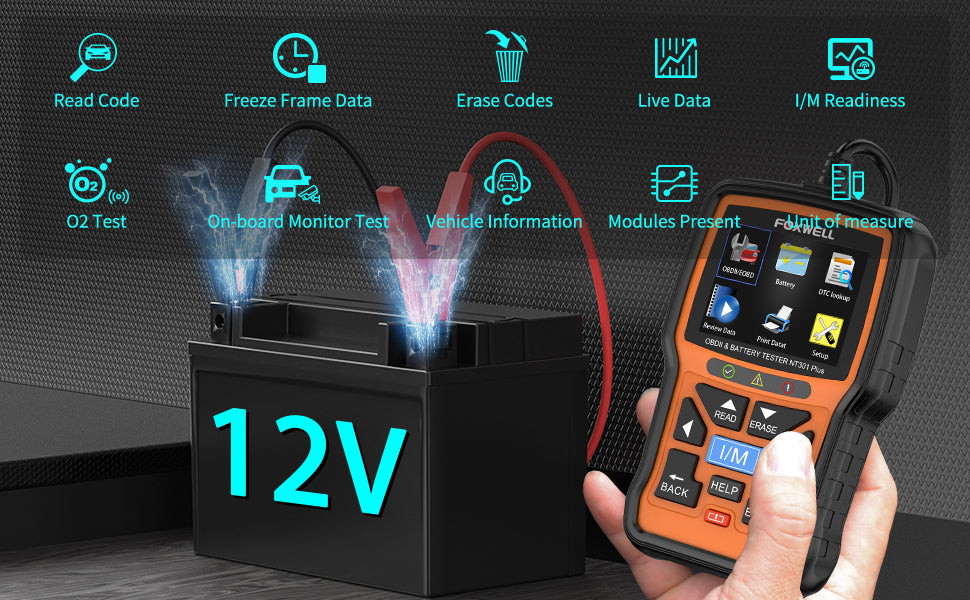Automotive diagnostics requires accessing and interpreting real-time data from your vehicle's onboard computer, and being able to do so accurately is of the utmost importance. A scan tool like that offered by Foxwell serves as an indispensable bridge between you and its complex systems, helping you monitor its health and performance in real time. This article will detail how using one of Foxwell's scanners allows users to record live data accurately while diagnosing vehicle issues.

Understanding the Scan Tool
Types of Scan Tools Available
Various scan tools are available today, ranging from primary code readers that can read and clear codes to more sophisticated scanners that offer full system diagnostics with live data streaming capabilities. Foxwell scanners, ,are known for their comprehensive diagnostic abilities,, making them suitable for both amateur car enthusiasts and professional mechanics. Use Foxwell NT530 to explain any issues encountered during real-world operations.
Key Features to Consider in a Scan Tool for Recording Live Data
When considering a scan tool to record live data, the Foxwell NT530 is an ideal option due to its comprehensive array of features tailored for in-depth vehicle diagnostics. Here are a few key points when using it as live data recording:
- Broad Vehicle Compatibility: The NT530 supports over 50 car brands and more than 10,000 models of all makes, making it an adaptable tool suitable for many different kinds of vehicles.
- Bi-Directional Control/Active Tests: With this feature, you can send commands directly into systems within the vehicle to assess their operational status and pinpoint where any malfunction may exist by watching how systems respond when given commands. It is an invaluable asset in diagnostics as it assists with pinpointing where exactly there is an issue within a system by monitoring how it reacts when responding to commands from you.
- Professional-Grade Full System Diagnosis: The NT530 provides professional-grade complete system diagnosis capabilities that give access to a broad array of systems and functionalities, much like original equipment manufacturer scanners would. This ensures you receive precise, comprehensive diagnostic data.
- Graphical Live Data Display: The scanner presents live vehicle sensor data in both textual and graphical formats for quick evaluations, making it easier to assess the performance of various vehicle components in real timereal time and spot anomalies more quickly. This feature makes real-time visualization of sensor data particularly helpful.
- Lifetime Free Software Updates: The NT530 offers lifetime updates that allow you to stay current with vehicle models and diagnostic algorithms without incurring additional costs. This feature makes the tool extremely cost-effective over time and contributes to its long-term usability.
- Support of All Maintenance Service Functions: The scanner covers most daily maintenance needs such as oil reset, SAS calibration, and DPF regeneration - eliminating the need for multiple scanners.
Preparing to Use Your Scan Tool
Prepping the Foxwell NT530 scan tool for use is essential to accurate diagnostics and vehicle analysis. Below is a comprehensive guide on how to get it ready:
Step 1: Unboxing and Initial Setup
After receiving your Foxwell NT530 scanner, open its packaging carefully to check that all components listed on its list are present and complete. Your package should include an NT530 scanner, USB cable, OBDII cable, memory card, CD (software), and user manual. Each component plays a vital role in setting up and using your scan tool effectively. Familiarize yourself with each component as they play a pivotal part in setting up and operating this scan tool.
Step 2: Charging and Powering On
Before beginning to use any device, it's advisable to charge its rechargeable battery or ensure it has sufficient battery power and power it on to ensure a proper boot-up process. Now is also an opportune time to explore its primary menu and become familiar with its interface.
Step 3: Software Installation and Updates
Attach the NT530 to a computer using its USB cable and install any necessary drivers or software from either the CD provided or directly download the latest version from the Foxwell website. You must regularly update your device's software to remain compatible with all car models released and access new diagnostic features. Foxwell offers lifetime free updates for their NT530 scanner so that you can stay informed without additional costs or inconvenience.
Step 4: Check Vehicle Compatibility
To ensure optimal diagnostic results, ensure the NT530 is compatible with the vehicle you intend to diagnose. Although Foxwell offers support for many makes and models of cars, checking compatibility is essential to effective diagnostics. You can access a comprehensive vehicle compatibility list on the official website or the user manual.
Step 5: Connecting Your Vehicle
To connect, locate the OBDII diagnostic port located beneath your dashboard near the steering column in your car and connect the OBDII cable from your NT530 to this port securely for reliable diagnosis of data or connection issues.
Step 6: Configuring Diagnostic Settings
Once connected to the vehicle, the NT530 must communicate with its ECU to access data. This might involve selecting its make, model, and engine type on the scanner - though vehicles that support VIN detection could allow the NT530 to identify these details automatically.
Step 7: Ready to Diagnose
Now that the Foxwell NT530 has been set up and configured, it is ready for diagnostic use. You can begin by reading your vehicle's diagnostic trouble codes (DTCs), gathering live data, or using any advanced features available on it.
Record Live Data Step-by-Step Guide
How to Connect the Scan Tool to Your Vehicle Locate the OBD-II port under your dashboard near the steering column and plug your Foxwell scanner in securely.
- Navigating a Scan Tool's Interface
Power on your scanner and use its main menu to access live data. Foxwell scanners feature an intuitive user experience with color displays and user-friendly menu navigation for an optimal scanning experience.
- Selecting Parameters to Record
You can choose which parameters you would like monitored, such as engine RPM, coolant temperature, or oxygen sensor data. Select those which relate directly to symptoms or issues your vehicle might be having.
Start Recording Live Data: Begin recording by following the on-screen prompts. As your vehicle moves forward, its scanner will display live data updates in real time on screen.
- Tips for Accurate Live Data Recording
In order to record effective live data, run the vehicle in various states, including idling, high RPMs, and driving. Continuously monitor any irregularities or fluctuations from normal behavior that deviate from this norm. Interpreting Live Data.
- Understanding Common Parameters
Proper vehicle diagnostics requires understanding what parameters the Foxwell NT530 scanner can monitor. Known as live data, these metrics provide real-time insight into your vehicle's operational health. Here's an overview of some critical parameters and their importance when diagnosing vehicle performance:
1. Engine RPM (Revolutions Per Minute): This parameter measures the speed at which your engine's crankshaft turns. Monitoring RPM can help diagnose issues related to engine idling, performance under load, and coordination with other vehicle systems.
2. Vehicle Speed Sensor (VSS): A vehicle speed sensor (VSS) monitors movement to provide speedometer readings, affecting engine load, timing, and fuel injection pulse width settings.
3. Oxygen Sensor Data: Oxygen sensors (O2 sensors) measure the oxygen in exhaust gasses. This information helps the engine management system maintain an appropriate air-fuel ratio. The proper functioning of oxygen sensors ensures maximum fuel efficiency and decreases harmful emissions.
4. Throttle Position Sensor (TPS): The Throttle Position Sensor (TPS) indicates the position of the throttle valve, which controls how much air enters an engine. The information from this sensor is used to adjust fuel injection, ignition timing, and other engine parameters - making it essential for throttle response and handling load changes in engines.
5. Engine Coolant Temperature (ECT): An engine control system relies on this sensor to monitor engine coolant temperature to optimize fuel injection and ignition timing during warm-up periods and under various operating conditions.
6. Fuel Pressure: Maintaining optimal fuel pressure levels is vital to keeping an engine's fuel system functioning optimally. This data can help identify any issues with pumps, regulators, or filters that could result in reduced performance or starting issues for the vehicle. It also assists with diagnosing problems related to poor engine starting or performance issues that might impact start-up times or throttle responses.
7. Mass Air Flow Sensor (MAF): The Mass Air Flow (MAF) sensor monitors air entering an engine. Accurate MAF readings enable its computer to calculate an ideal air-fuel mixture for optimal combustion.
8. Battery Voltage data provides essential insight into the condition of a vehicle's electrical system, helping ensure that battery charging is occurring correctly and that the charging system (including the alternator ) is working as intended.
9. Diagnostic Trouble Codes (DTCs) While DTCs do not constitute live data, reading them can still provide insight into any malfunctions within a vehicle's systems that might otherwise not be readily apparent from live data alone. Foxwell's NT530 features DTC reading capability, which allows technicians to track down specific problems that may not have become evident through live data alone.

By monitoring these parameters, the Foxwell NT530 helps diagnose various mechanical and electrical problems, providing critical data that can guide repairs and ensure vehicle efficiency. For more in-depth guidance on interpreting these parameters and troubleshooting standard vehicle issues, refer to your user manual or Foxwell's support page on their website for detailed guides and troubleshooting tips.
As mentioned, using your Foxwell scanner to record and analyze live data can dramatically transform how you maintain and troubleshoot your vehicle. With this knowledge, you are better prepared to address automotive issues head-on while keeping your car running reliably and smoothly. Remember: Understanding live vehicle data is vital for proactive vehicle maintenance and longevity.
FAQs
Can the Foxwell NT530 update automatically?
No, the NT530 does not update automatically. You need to manually download updates from the Foxwell official website and install them using the USB cable provided with the device.
Does the Foxwell NT530 work on electric vehicles?
Yes, the Foxwell NT530 can diagnose systems in electric vehicles, but it's important to check the specific compatibility with your vehicle model on the Foxwell website or user manual.
Is the Foxwell NT530 able to reset service lights?
Yes, the NT530 can reset service lights. It supports most commonly required service features like oil service reset, SAS calibration, and more, depending on the vehicle.




Leave a comment
This site is protected by reCAPTCHA and the Google Privacy Policy and Terms of Service apply.